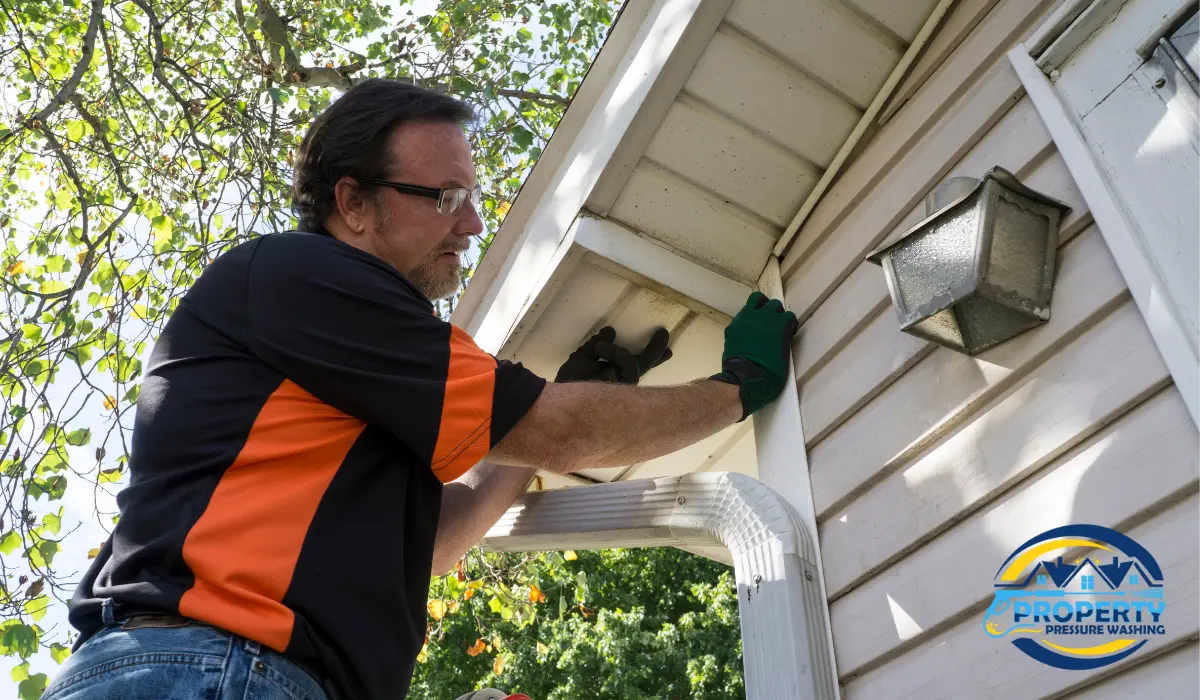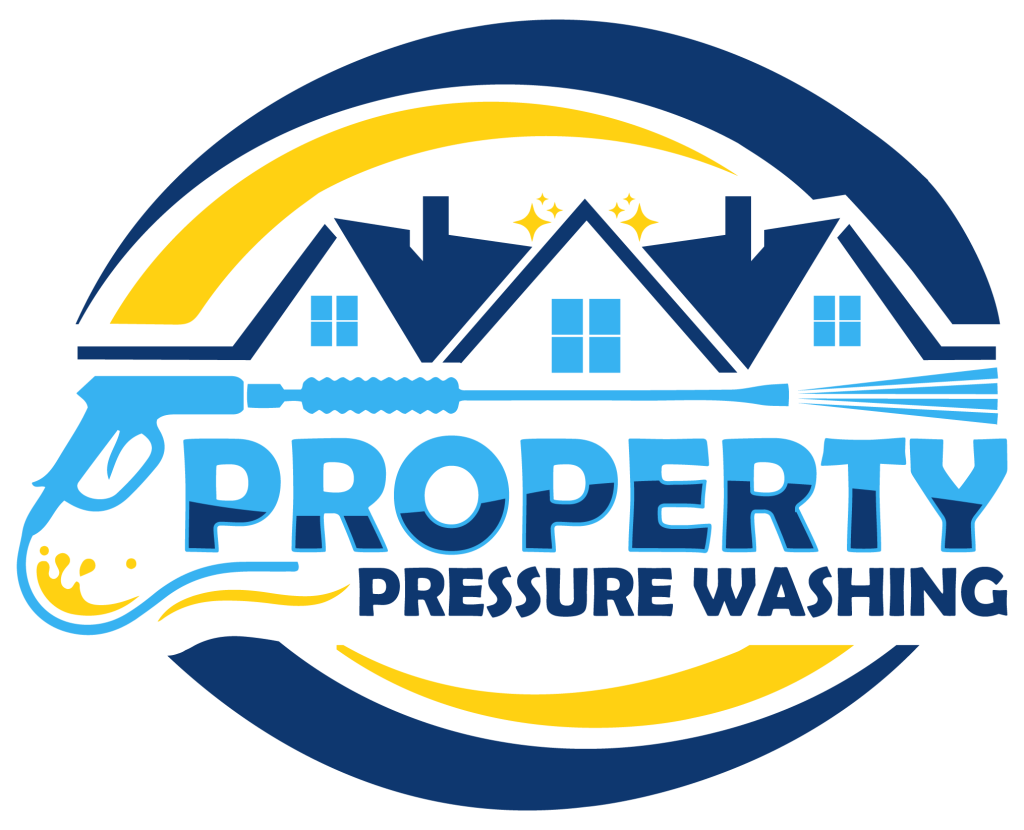How To Clean Oxidized Vinyl Siding And Why Get It Cleaned?
Oxidized vinyl siding can dull the appearance of any home, turning once-vibrant exteriors faded and chalky. Over time, sun exposure, harsh weather, and pollution cause vinyl siding to oxidize, diminishing its appeal. In this guide, we’ll walk you through effective, easy methods to clean oxidized vinyl siding and restore your home’s fresh, polished look.
Whether you’re preparing for a new paint job or just want to enhance curb appeal, these steps will help you bring back the siding’s original color and charm, ensuring your home looks its best year-round. But before explaining the main topic How To Clean Oxidized Vinyl Siding? lets discuss some important topic related to Oxidation on Vinyl Siding.
Why Should You Clean Oxidized Vinyl Siding?
In the US, vinyl siding is the most often used type of external cladding. Because it is a long-lasting, adaptable, reasonably priced, and simple material to install and maintain, homeowners adore it. However, with time, you could detect a white, chalky material on your vinyl trim and siding.
You are witnessing oxidation or fading. When the polyvinyl chloride (PVC) material is exposed to air and other natural elements, together with debris and oil gathering, a natural process takes place.
Vinyl siding should have its oxidation removed. Oxidation can cause your external cladding to deteriorate or deteriorate in addition to fading and other visual problems. Maintaining your vinyl siding on a regular basis guarantees that it will look great and survive for many years.
What Causes Oxidation On Vinyl Siding?
Vinyl siding oxidizes as a result of environmental pollutants, severe weather, and extended exposure to UV radiation. Because certain places stay humid for longer periods of time and more intensely than others, humidity plays a big part in the oxidation process in some places.
The vinyl undergoes a chemical breakdown as a result of this contact, leaving behind a white, chalky residue. This can reduce the siding’s capacity to insulate against moisture and provide thermal insulation, in addition to detracting from the aesthetic appeal of your house.
You will love to read: Tips for Pressure Washing In Cold Weather
Step by step guide on how to clean oxidized vinyl siding?

Although cleaning oxidized vinyl siding can seem difficult, it is completely doable with the correct equipment and methods. This thorough tutorial will assist you in the process.
1. Check for Signs of Oxidation
Darker vinyl siding will make the white, powdery material obvious to see. To check for oxidation, run a finger across the surface of your vinyl siding if it’s pastel or lighter in color.
2. Prepare Your Cleaning Solution
To remove oxidation off vinyl siding, use common home chemicals or substances like bleach, vinegar, and dish soap.
- Mix one gallon of water with five cups of vinegar to make a vinegar cleaning solution.
- Combine 1 gallon of water, 4 cups of household bleach, 2/3 cup of household cleaning, and 1/3 cup laundry detergent to get a stronger bleach solution.
- Fill the plastic spray bottle with the cleaning solution.
3. Rinse Vinyl Siding
You may rinse your vinyl siding with a garden hose. This is to remove any accumulated dirt, filth, mold, and other impurities from your vinyl siding.
4. Wear Protective Gear
Before working with faded or oxidized vinyl siding, make sure you’re using gloves and protective glasses. Additionally, you should dress to minimize skin exposure. Volatile organic chemicals released by PVC may irritate your skin or eyes. Additionally, use caution when utilizing a ladder. At this point, you don’t want to hurt yourself.
5. Apply Cleaning Solution to Vinyl Siding
Your vinyl siding should be sprayed with the cleaning solution. To avoid the cleaning solution drying out too soon, work in tiny parts. Scrub the vinyl siding using a soft-bristled brush or a non-abrasive sponge. To avoid dark markings, start at the bottom and work your way up.
6. Rinse Cleaning Solution
Rinse the cleaning solution with the garden hose. In order to prevent streaking and efficiently remove dirt, make sure the water runs down. After that, let the vinyl siding air dry.
7. Regular Maintenance
Check for oxidation on your vinyl siding on a regular basis. Large-scale oxidation may need more upkeep or repair and will be more difficult to clean.
Vinyl siding oxidation may be easily and affordably addressed with this do-it-yourself cleaning technique. But there are drawbacks as well. It’s a highly lengthy and laborious procedure. Additionally, it’s possible that you won’t get the desired outcomes the first time.
To find the best materials for removing oxidation from vinyl siding trims and surfaces, home remedies typically involve trial and error. It’s also important to keep in mind that vinyl siding frequently oxidizes. This step will need to be repeated many times during the year.
What is Mold on Vinyl Siding?
When moisture gathers on the surface of vinyl siding, a typical issue is mold growth. Rain, snow, and humidity are just a few of the sources of this moisture. Mold spores can develop and spread when they come into touch with the vinyl siding’s wet surface, leaving the siding with ugly brown, green, or black patches.
Step by step guide on how to fix mold vinyl on siding?
Follow the steps given below to remove mold vinyl on siding.
Step 1: Identify the Problem Areas
To begin repairing mold on vinyl siding, you must first determine where the issue is. Go for a stroll around your house and look for any indications of mold on the siding. Look for places such beneath eaves and along downspouts that are shady and prone to moisture accumulation. Additionally, look for places like the vicinity of a sprinkler system or the foundation where water could be splattering up onto the siding.
Step 2: Gather Your Supplies
To fix mold on vinyl siding, you will need a few supplies. These include:
- Garden hose with a spray nozzle
- Soft-bristled brush
- Bucket
- Mild detergent or vinyl siding cleaner
- Bleach
- Rubber gloves
- Safety goggles
Step 3: Prepare Your Cleaning Solution
In a bucket, combine one part bleach with three parts water. To protect your skin and eyes, put on safety goggles and rubber gloves. If you would rather use a commercial vinyl siding cleaner, make sure you follow to the label’s directions.
Step 4: Spray the Siding
To get rid of any loose dirt or debris, spray down the siding with a garden hose fitted with a spray nozzle. To prevent water damage, make sure the water flows downhill and away from the siding rather than up behind it.
Step 5: Apply the Cleaning Solution
Scrub the moldy siding sections carefully with a soft-bristled brush dipped in the cleaning solution. The vinyl siding’s surface may get damaged if you brush it with excessive force. Give the siding ten to fifteen minutes to rest in the cleaning solution.
Step 6: Rinse the Siding
Rinse the siding well with the garden hose to get rid of the cleaning solution. you prevent water from being forced up behind the siding, make sure you once more divert the water downward and away from the siding.
Step 7: Repeat as Necessary
Repeat steps five and six as needed until the mold is gone if it remains after the initial cleaning. You might need to use a power washer or a more potent cleaning solution if the mold is really difficult to remove. When utilizing a pressure washer, exercise caution though, since excessive pressure might harm vinyl siding.
Preventing Future Oxidation
Continued maintenance is necessary to keep your vinyl siding looking great and lasting a long time. You can slow down the pace of oxidation and maintain the finest possible appearance for your house by doing a few basic steps.
Regular Cleaning
To stop oxidation in the future, cleaning must be done often. Wash your siding at least once a year if possible. This aids in clearing away any contaminants, dirt, and grime that might hasten the oxidation process.
Protective Coatings
Think about using a sealer or protective coating made specifically for vinyl siding. These coatings assist to slow down oxidation by acting as a barrier against oxygen and UV radiation. Make sure you select a high-quality product and apply it according to the manufacturer’s recommendations.
- For long-lasting protection, use coatings based on silicone.
- To guarantee optimal adhesion, apply the coating during temperate weather.
Maintain Surrounding Areas
To keep leaves, branches, and other plant debris from contacting your siding, trim the vegetation surrounding your house. This not only improves the appearance but also lessens the possibility of damage and moisture accumulation, which may fuel oxidation and the formation of mold.
- Maintain gutters clear of dirt and clean.
- To prevent water damage, make sure your home has enough drainage.
Prompt Repairs
Take quick action to repair any siding damage. The oxidation process can be sped up by cracks, holes, or loose panels that expose the underlying material to the elements.
Should You Clean Oxidized Vinyl Siding Yourself or Hire a Professional Service?
Consider the benefits and drawbacks of each strategy before choosing to clean oxidized vinyl siding yourself or by hiring a professional pressure washing service. Although it takes a lot of effort, a home solution can be less expensive. Additionally, you run the risk of suffering greater harm than you first did. It will cost extra to hire a professional pressure washer. But they have the know-how and experience to finish the task fast.
Do not hesitate to contact us if you have any inquiries concerning rusted vinyl siding cleaning. To let you know exactly what has to be done and how long it will take, we may schedule a consultation session.
Conclusion: How To Clean Oxidized Vinyl Siding?
Vinyl siding oxidation and mold may be ugly and perhaps harmful to your house. However, you may successfully clean and return your vinyl siding to its original state by following the above instructions. Make sure to take preventative actions like routine cleaning, gutter maintenance, and trimming trees to avoid these problems in the future.
Get in touch with Property Pressure Wash, your go-to local contractor in the Florida City area and everywhere else, if you need assistance removing mold or oxidation from your vinyl siding.
FAQs: How To Clean Oxidized Vinyl Siding?
We have deeply cover and mentioned each and everything about the How To Clean Oxidized Vinyl Siding? However, don’t hesitate to contact with our experts if you have further queries or questions in your mind.
Can oxidation be removed from vinyl siding?
When vinyl siding is exposed to UV radiation from the sun, the polymers in the material start to degrade, a process known as oxidation. The siding may become chalky, faded, or discolored as a result of this procedure. The good news is that vinyl siding may be restored to its original look by removing oxidation.
Does vinegar remove oxidation from vinyl?
To remove oxidation off vinyl siding, use common home chemicals or substances like bleach, vinegar, and dish soap. Mix one gallon of water with five cups of vinegar to make a vinegar cleaning solution.
Does baking soda clean vinyl?
For natural floor cleaning, vinegar or baking soda are the finest choices. White vinegar or apple cider work well as natural vinyl floor cleansers.
What is the best homemade solution to clean vinyl siding?
Liquid laundry bleach, laundry detergent, and household cleaner
One quart of liquid laundry bleach, two-thirds cup of powdered home cleaning, and one-third cup of powdered laundry detergent should be the precise measurements. Use one gallon of water as a complement.
What should you not clean vinyl siding with?
It’s crucial to avoid using any cleansers that contain organic solvents, undiluted chlorine bleach, liquid grease remover, nail polish remover, furniture polish, or cleaners while cleaning your vinyl siding. The siding’s surface may sustain harm from these materials.
